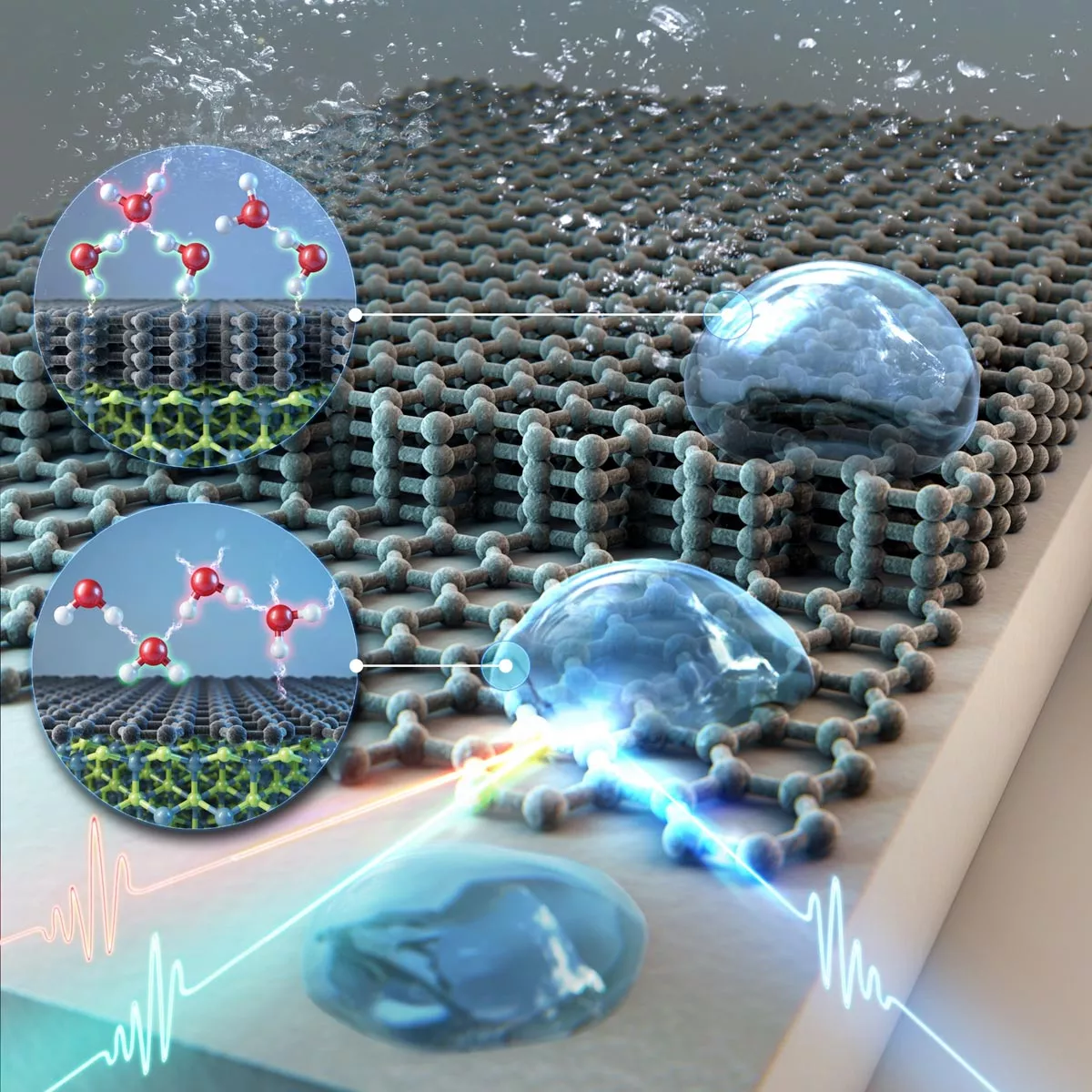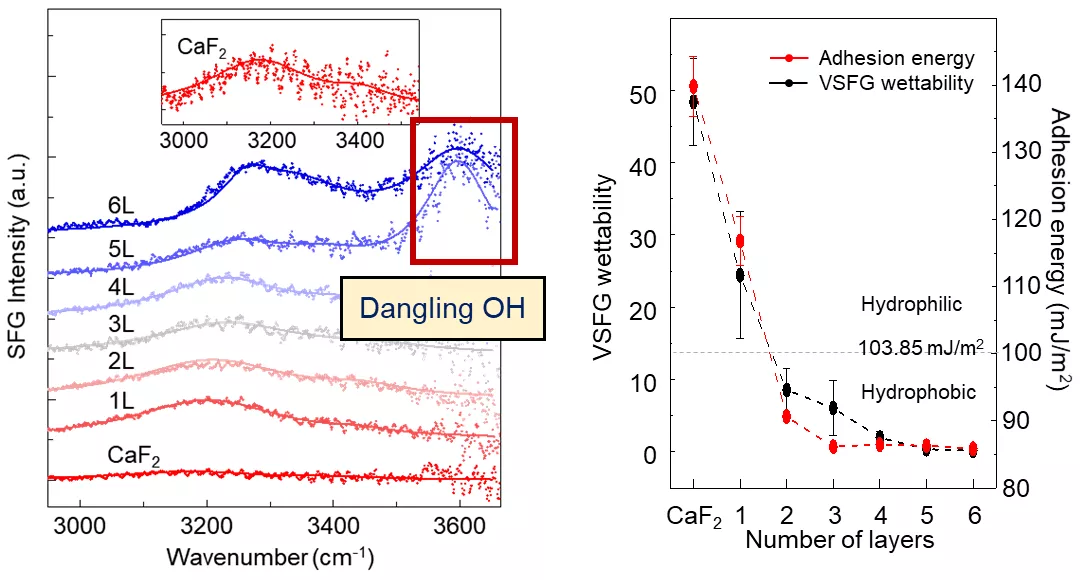Wettability of a material is the ability of a liquid to keep in contact with a solid surface. It is directly proportional to hydrophilicity and inversely proportional to hydrophobicity. It is one of the most important properties of solids. Understanding the wettability of different substrates is very important for various industrial applications, such as seawater desalination, coating agent and water electrolyte.

So far, most studies on matrix wettability are carried out at the macro level. The macroscopic measurement of wettability is usually determined by measuring the water contact angle (WCA), which is the angle of water droplets relative to the substrate surface. However, it is very difficult to accurately measure what happens at the interface between substrate and water at the molecular level.
At present, the micro measurement techniques such as reflection based infrared spectroscopy or Raman spectroscopy can not selectively observe the interfacial water molecules. Because in the whole liquid, the number of water molecules is much larger than the molecules in contact with the surface, and the signal of interface water molecules will be masked by the signal of water molecules in the liquid.
In order to overcome this limitation, a research team jointly carried out by the center for molecular spectroscopy and dynamics (cmsd) in Seoul Institute of basic sciences (IBS) and Korean University found that vibration and frequency generation spectroscopy (VSFG) can be used to measure the wettability of two-dimensional materials. Using VSFG spectroscopy, the team successfully measured the vibrational modes of water molecules at the interface between graphene and water.

VSFG is a useful technology, which can link the macro measurement results with the characteristics at the molecular level. It is a surface selection tool, which uses its own surface selection rules to study interface molecules, and it has very good surface resolution - only a few molecular layers.
It is understood that the research team has determined the unique ability of graphene to project the wettability of the substrate onto its surface, which is called "wetting transparency". They observed that the wetting transparency of graphene decreased with the increase of the number of graphene layers, and disappeared when the thickness of graphene exceeded 4 layers. This is the first observation to describe the hydrophobicity of graphene surface after exceeding a certain number of layers at the molecular level.
In addition, the researchers also defined a new concept of the wettability of VSFG, that is, the ratio of water molecules forming strong hydrogen bonds to water molecules forming weak or no hydrogen bonds. The wettability of VSFG is closely related to the adhesion energy, which is calculated from the observed macro WCA measurements. This proves that VSFG is an effective tool to define the wettability of material surface.
By using the wettability of VSFG, the researchers measured the wettability of graphene in real time. However, it is impossible to observe the wettability in real time using the traditional WCA experiment. Therefore, this shows that VSFG can be a decisive technology to measure the water adhesion energy on any spatial closed interface that cannot be measured by water contact angle. In addition to graphene, VSFG spectroscopy is expected to clarify the wettability of other low dimensional materials.
Eunchan Kim, the first author of the study, said: "this study confirms that VSFG spectroscopy can be used as a general tool to measure wettability. We demonstrate the potential of VSFG spectroscopy to measure the wettability of complex systems that could not be observed before."
Professor CHO minhaeng, director of cmsd, pointed out: "through VSFG spectroscopy, we are studying the micro characteristics of graphene and other two-dimensional functional materials such as graphene oxide and hexagonal boron nitride. Through these, it will be possible to solve various problems hindering the commercialization of two-dimensional functional materials."